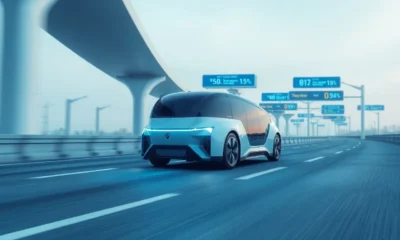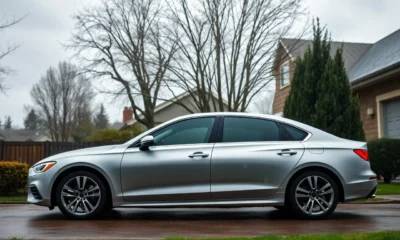Auto Insurance
Best Auto Insurance Companies for Electric Vehicles in 2025
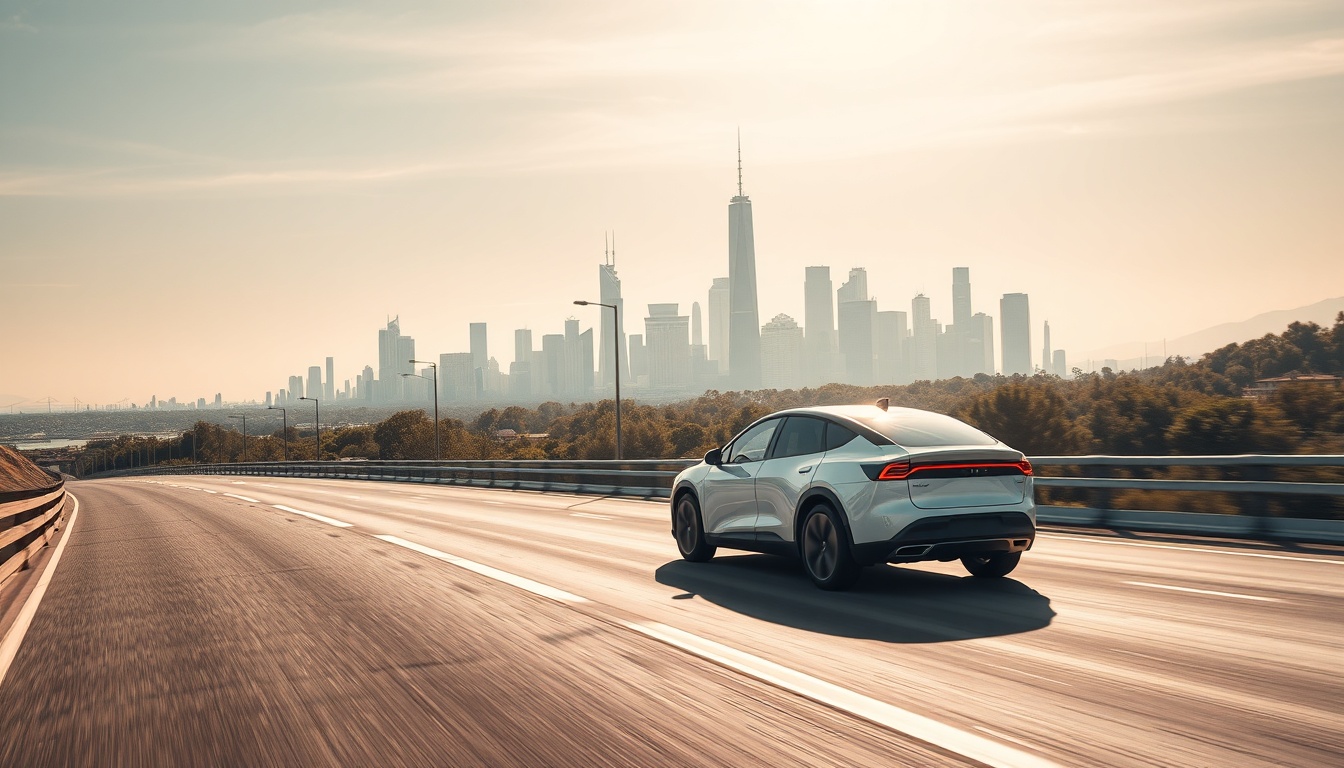
Electric vehicles (EVs) are dominating U.S. roads, and while they’re eco-friendly and tech-packed, they also come with unique insurance needs. Finding the best auto insurance for EVs in 2025 is crucial if you want comprehensive protection without overpaying.
In this guide, we’ll explore the top insurance providers for EVs in the USA, compare their benefits, and give you insider tips to get the best rates.
Why EV Insurance is Different from Regular Auto Insurance
Electric vehicles often cost more to insure than gas-powered cars because of:
- Higher Repair Costs – EV parts, especially batteries, are expensive.
- Specialized Mechanics – Repairs require trained EV technicians.
- Advanced Tech – Sensors, cameras, and software increase claim costs.
- Battery Replacement Risks – A damaged EV battery can cost thousands.
For detailed reasons, see our Why EV Insurance Is More Expensive (And How to Save) guide.
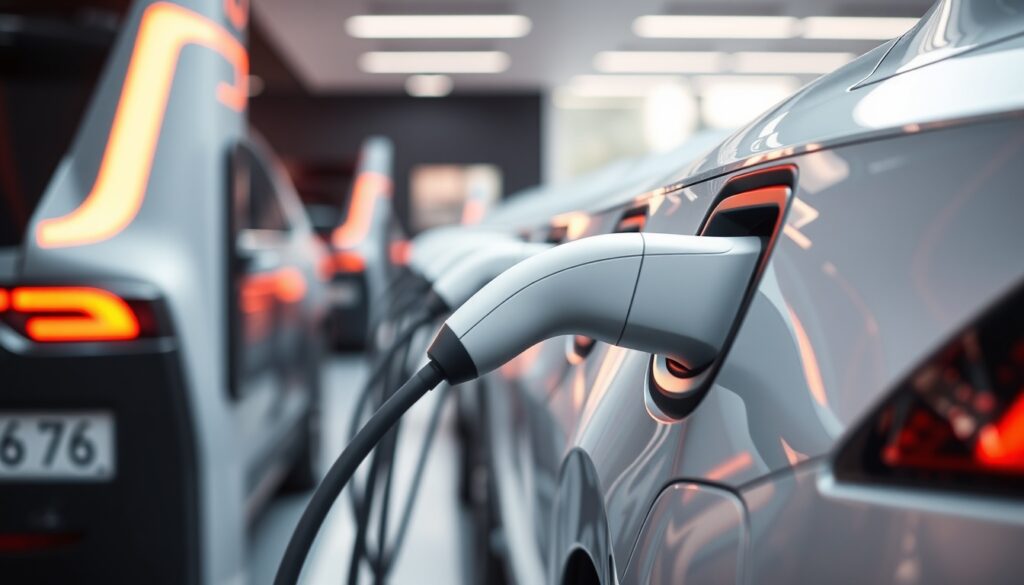
Top 7 Best Auto Insurance Companies for EVs in 2025
Here’s a curated list of the most reliable EV insurers based on affordability, coverage, customer service, and EV-specific benefits.
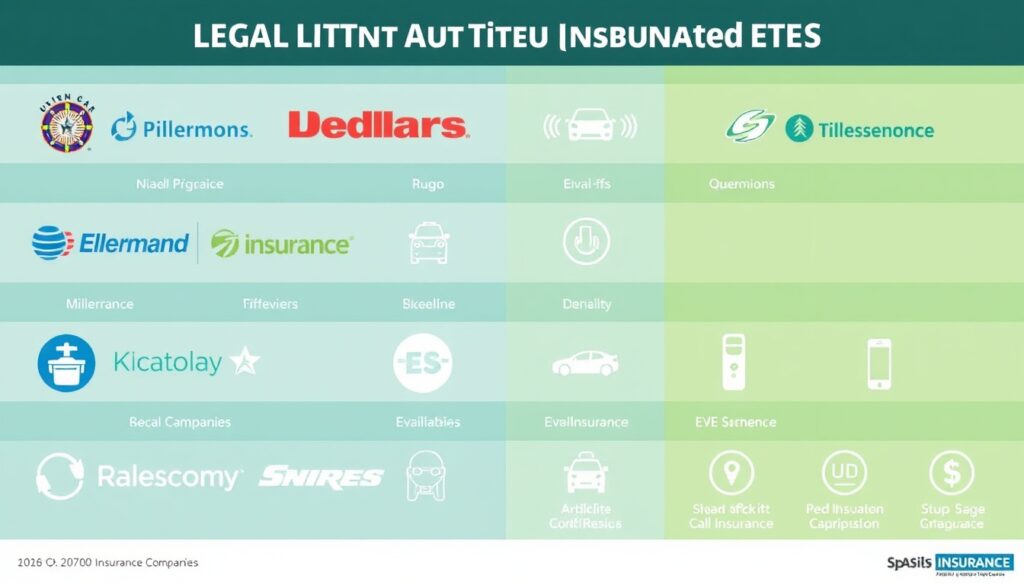
1. State Farm – Best for Overall Value
Why it’s great for EVs:
State Farm is known for competitive rates and excellent customer service. For EV owners, they offer specialized repair network access and multiple discounts, including safe driver and multiple policy savings.
Key EV Benefits:
- Coverage for charging equipment.
- Roadside assistance for EV-specific issues (like charging failures).
- Generous multi-car discounts.
Average Annual EV Premium: $1,380
Website: State Farm Official
2. Progressive – Best for Tech-Savvy EV Drivers
Why it’s great for EVs:
Progressive shines with their Snapshot® program, which rewards low-mileage and safe EV driving. Their online tools make it easy to compare EV insurance rates.
Key EV Benefits:
- EV battery replacement coverage after accidents.
- Custom parts and equipment coverage for upgraded EV features.
- Charging station liability coverage.
Average Annual EV Premium: $1,420
Website: Progressive Official
3. GEICO – Best for Affordable EV Coverage
Why it’s great for EVs:
GEICO offers some of the most competitive EV rates in the country while maintaining excellent claims service.
Key EV Benefits:
- Optional mechanical breakdown coverage for EV components.
- Roadside assistance including flatbed towing for EVs.
- Charging station damage coverage.
Average Annual EV Premium: $1,350
Website: GEICO Official
4. Allstate – Best for Comprehensive Protection
Why it’s great for EVs:
Allstate’s coverage includes robust replacement cost options, making it ideal for expensive EVs like Tesla or Lucid.
Key EV Benefits:
- New car replacement coverage up to 2 years old.
- Accident forgiveness to keep rates stable.
- Smart home + EV insurance bundling discounts.
Average Annual EV Premium: $1,500
Website: Allstate Official
5. Nationwide – Best for Multi-Policy Discounts
Why it’s great for EVs:
Nationwide offers substantial savings when bundling auto and home insurance, perfect for EV owners who want an all-in-one policy.
Key EV Benefits:
- EV charging equipment coverage.
- Coverage for OEM (original equipment manufacturer) EV parts.
- Vanishing deductible rewards.
Average Annual EV Premium: $1,390
Website: Nationwide Official
6. Travelers – Best for Luxury EVs
Why it’s great for EVs:
Travelers provides high-limit liability and comprehensive coverage, making it a great choice for luxury EVs like Rivian or Porsche Taycan.
Key EV Benefits:
- New EV replacement coverage for total loss.
- OEM part replacement guarantee.
- Generous rental car reimbursement for long repair times.
Average Annual EV Premium: $1,580
Website: Travelers Official
7. Farmers – Best for Flexible Coverage Options
Why it’s great for EVs:
Farmers allows tailored EV policies with coverage for both personal and business use.
Key EV Benefits:
- EV battery coverage.
- Home charger installation protection.
- Rideshare coverage for EV drivers using Uber/Lyft.
Average Annual EV Premium: $1,410
Website: Farmers Official
Tips to Save on EV Insurance in 2025
- Bundle Policies – Combine home and auto insurance for up to 20% savings.
- Use Telematics – Safe driving trackers like Progressive Snapshot® can lower rates.
- Ask for EV Discounts – Some insurers offer up to 10% off for EV ownership.
- Improve Credit Score – In most U.S. states, better credit means lower premiums.
- Shop Annually – EV insurance rates can change quickly; compare quotes each year.
Which EV Insurance Should You Choose?
If you’re seeking affordable, reliable, and EV-friendly insurance, the top picks are:
- Budget-focused: GEICO or State Farm
- Tech-focused: Progressive
- Luxury EV owners: Travelers or Allstate
Final Thoughts
The best auto insurance for EVs in 2025 is one that balances cost, coverage, and service. As EV adoption grows, insurers are offering more tailored policies — so shop smart, ask about EV-specific perks, and compare quotes regularly.
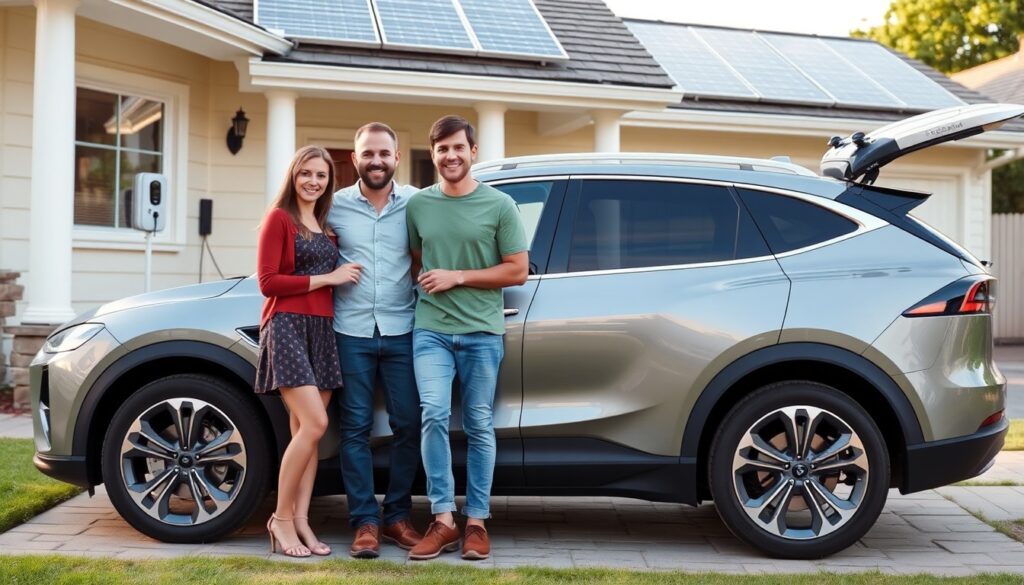
Auto Insurance
Do You Need Gap Insurance for Your New Car in 2025?
Introduction
Buying a brand-new car in 2025 is exciting. From advanced safety features to sleek designs and cutting-edge technology, vehicles today are smarter than ever. But along with this excitement comes financial responsibility. If you’re financing or leasing your car, one crucial question arises: Do you need gap insurance for your new car in 2025?
In the USA, car values depreciate quickly, and if your car is totaled or stolen, standard auto insurance may not cover the full amount you owe on your loan or lease. That’s where gap insurance comes into play. In this article, we’ll break down what gap insurance is, why it’s important, when you should buy it, and whether it makes sense for you in 2025.
What Is Gap Insurance?
Gap insurance (Guaranteed Asset Protection) is a type of auto coverage that pays the difference between your car’s actual cash value (ACV) and the amount you still owe on your loan or lease.
Example:
- You buy a new car for $35,000 in 2025.
- After a year, its ACV drops to $28,000 due to depreciation.
- If the car gets totaled, your insurance company pays $28,000.
- But if you still owe $32,000 on your loan, you’re left with a $4,000 gap.
- Gap insurance covers this $4,000 so you don’t have to pay out of pocket.
Why Is Gap Insurance Relevant in 2025?
Cars in 2025 are more expensive due to inflation, supply chain issues, and higher interest rates on auto loans. That means:
- Loan balances are higher.
- Lease contracts are longer.
- Depreciation still happens quickly in the first few years.
According to Edmunds, a new car loses 20%–30% of its value within the first year. That makes gap insurance especially important for American car buyers in 2025.
Do You Really Need Gap Insurance in 2025?
The answer depends on your situation. Gap insurance isn’t for everyone, but in many cases, it’s worth it. Let’s look at the scenarios.
You Need Gap Insurance If:
- You financed a car with little or no down payment.
- You chose a long-term loan (60–84 months).
- You’re leasing a car (many lease agreements require gap coverage).
- Your car model has high depreciation rates.
- You’re rolling over negative equity from an old loan into your new one.
You May Not Need Gap Insurance If:
- You made a large down payment (20% or more).
- You have a short loan term (36 months).
- Your car retains value well (like some trucks or luxury models).
- Your loan balance and car’s market value are almost the same.
How Much Does Gap Insurance Cost in 2025?
Gap insurance is surprisingly affordable. Prices vary depending on where you buy it:
- From your auto insurer: $20–$40 per year (cheapest option).
- From the dealership/finance company: $400–$800 (added to loan).
- As a standalone policy: $100–$300 annually.
Tip: Always compare quotes. Buying gap insurance directly from your car insurance provider is usually the most cost-effective choice in the USA.
Where to Get Gap Insurance in 2025
You have multiple options:
- Car Insurance Providers – Companies like Geico, Progressive, and Allstate offer affordable add-ons.
- Dealerships & Finance Companies – Convenient but often overpriced.
- Specialty Insurers – Standalone gap coverage companies.
👉 Pro Tip: Check if your car insurance provider already includes loan/lease payoff coverage, which is similar to gap insurance.
Pros and Cons of Gap Insurance
✅ Advantages:
- Protects you from paying thousands out of pocket.
- Peace of mind when financing or leasing.
- Affordable if purchased through your insurance company.
❌ Disadvantages:
- Not necessary for everyone.
- Dealerships may overcharge.
- Only covers loan/lease balance, not deductibles or extra add-ons.
Alternatives to Gap Insurance
If gap insurance doesn’t suit you, consider these alternatives:
- Loan/Lease Payoff Coverage – Offered by some insurers; works similarly to gap.
- New Car Replacement Coverage – Pays to replace your totaled car with a brand-new one of the same make/model.
- Emergency Savings Fund – Set aside money to cover unexpected loan gaps.
Tips for Deciding If Gap Insurance Is Right for You
- Check your car’s depreciation rate. (Some brands lose value faster.)
- Review your loan balance vs. ACV after 6–12 months.
- Compare insurance quotes before saying yes at the dealership.
- Cancel gap coverage once your loan balance is lower than your car’s value.
Conclusion
So, do you need gap insurance for your new car in 2025?
- If you’re financing with little down payment, leasing, or have a long-term loan, the answer is yes.
- If you bought your car with cash or a big down payment, you probably don’t.
Ultimately, gap insurance is about protecting your financial future. For just a few dollars a month, it can save you thousands if the unexpected happens.
Image Placement Suggestions (Max 4)
1. Banner Image (Top of Blog)
Prompt: A brand-new 2025 car parked in front of a modern house, with sunlight reflecting on its shiny surface, symbolizing excitement of a new purchase.
Alt Text: New 2025 car in driveway representing excitement of ownership.
2. Image Inside Section: What Is Gap Insurance?
Prompt: Illustration of a car accident with insurance documents and a calculator, highlighting financial protection.
Alt Text: Gap insurance illustration showing car accident and financial protection.
3. Image Inside Section: Why Gap Insurance in 2025?
Prompt: A graph-style image showing rapid depreciation of a car’s value in the first year.
Alt Text: Car depreciation chart for new vehicles in 2025.
4. Image Inside Section: Pros and Cons
Prompt: Split-screen image with green checkmarks on one side and red crosses on the other, representing pros and cons.
Alt Text: Visual comparison of pros and cons of gap insurance.
Internal & External Links
Internal Links (examples for your blog):
- Understanding Collision vs Comprehensive Coverage
- What Does Comprehensive Auto Insurance Actually Cover?
External Links:
Auto Insurance
Understanding Collision vs Comprehensive Coverage
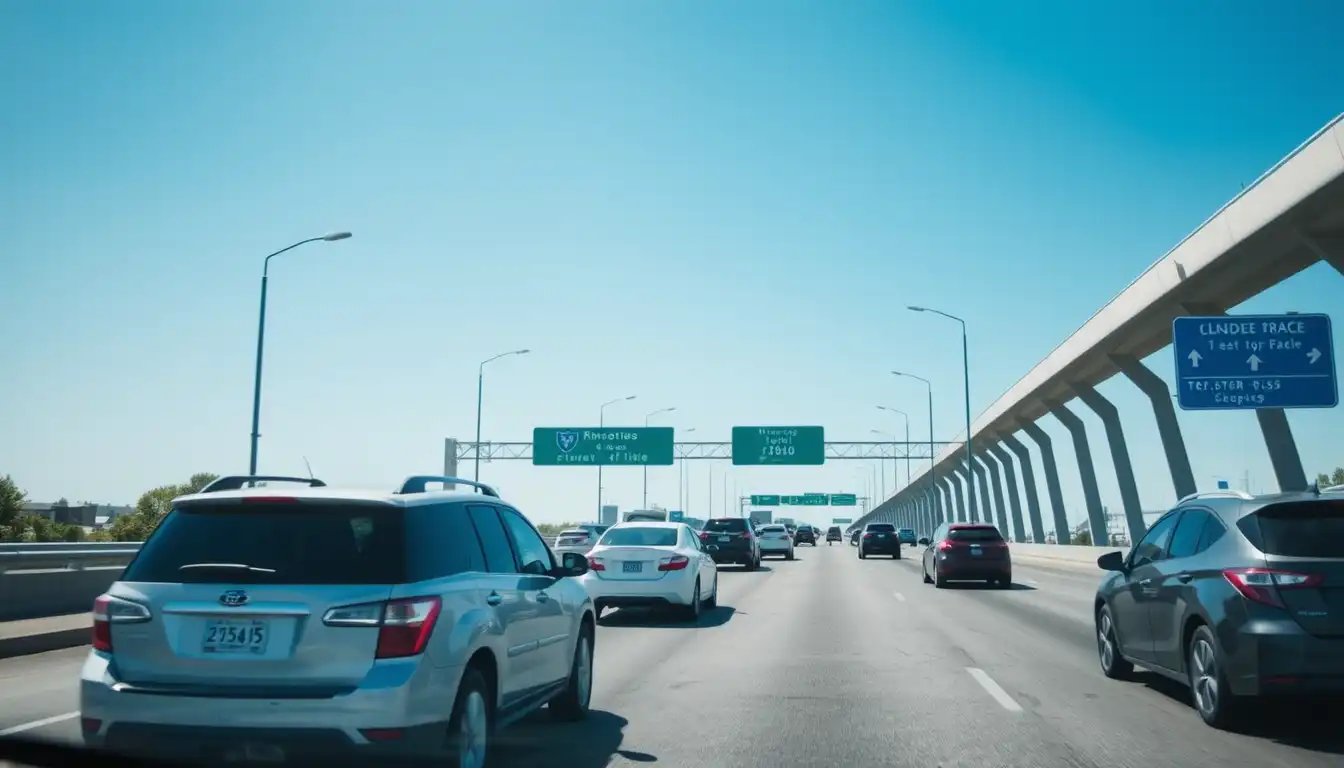
When buying car insurance in the United States, many drivers get confused between collision vs comprehensive coverage. Both are types of optional auto insurance that protect your car, but they cover very different situations. Choosing the right one depends on your vehicle, budget, and driving habits.
In this guide, we’ll break down:
- What collision and comprehensive coverage actually mean
- How they work
- Key differences between the two
- When you need one or both
- Cost considerations
- Real-life examples to make the choice easier
By the end, you’ll know exactly which type of coverage is right for you.
What is Collision Coverage?
Collision coverage pays for damage to your car after an accident involving another vehicle or object, regardless of who is at fault.
✅ What Collision Insurance Covers
- Accidents with another vehicle (even if you’re at fault)
- Single-car crashes (like hitting a tree, pole, or guardrail)
- Rollovers
- Damage from potholes
❌ What Collision Insurance Does NOT Cover
- Theft or vandalism
- Weather-related damages (hail, floods, storms)
- Fire damage
- Medical bills (covered under personal injury protection or health insurance)
In short: Collision coverage protects your car in accidents, not from external risks like weather or theft.

What is Comprehensive Coverage?
Comprehensive coverage (sometimes called “other than collision”) protects your car from non-accident-related damage.
✅ What Comprehensive Insurance Covers
- Theft
- Vandalism
- Natural disasters (hurricanes, floods, tornadoes, earthquakes)
- Falling objects (tree branches, debris)
- Fire
- Animal collisions (hitting a deer or bird)
- Broken glass (like windshield damage)
❌ What Comprehensive Insurance Does NOT Cover
- Damage from accidents (that’s collision coverage)
- Normal wear and tear
- Mechanical breakdowns
In short: Comprehensive coverage protects your car from external risks that are out of your control.

Collision vs Comprehensive Coverage: Key Differences
| Feature | Collision Coverage | Comprehensive Coverage |
|---|---|---|
| Covers | Accidents & crashes | Non-accident risks (theft, weather, fire, animals) |
| Example | You hit another car or pole | A tree falls on your car during a storm |
| Required? | Not legally required, but may be by lenders | Not legally required, but may be by lenders |
| Best For | Drivers who commute often or live in busy areas | Drivers in high-crime or weather-risk areas |
👉 Focus keyword note: Notice how collision vs comprehensive coverage naturally appears in this comparison to improve SEO.
Do You Need Both Collision and Comprehensive Coverage?
Whether you need both depends on:
- Your car’s age & value – If your car is older and not worth much, paying extra for both coverages may not make financial sense.
- Your budget – These coverages are optional, but if you rely heavily on your car, both provide peace of mind.
- Where you live – In urban areas, collision coverage is often more valuable. In rural or storm-prone areas, comprehensive coverage might matter more.
- Lease or loan requirements – If your car is financed or leased, your lender will likely require both coverages until the loan is paid off.

Cost of Collision vs Comprehensive Coverage
According to the Insurance Information Institute (III), the average annual cost in the U.S. is:
- Collision coverage: around $370/year
- Comprehensive coverage: around $175/year
Together, they can add $500–$600 per year to your insurance premium.
📌 Tip: Always compare rates. Every insurance company calculates risks differently, so prices vary widely.
Real-Life Examples
- Collision Example: You’re driving in Chicago during rush hour and rear-end another car. Collision insurance covers your car’s repair costs.
- Comprehensive Example: A hurricane in Florida floods your parked car. Comprehensive insurance covers the damage.
Pros and Cons of Each Coverage
Collision Coverage
Pros:
- Covers at-fault accidents
- Helpful for city/urban drivers
- Prevents high out-of-pocket repair costs
Cons:
- More expensive than comprehensive
- May not be worth it for older cars
Comprehensive Coverage
Pros:
- Protects against theft and natural disasters
- Usually cheaper than collision coverage
- Provides peace of mind for external risks
Cons:
- Doesn’t cover accident damage
- Still requires a deductible
How to Decide: Collision vs Comprehensive
Ask yourself:
- Do I live in an area with high accident rates? → Consider collision coverage
- Is my area prone to theft, vandalism, or storms? → Consider comprehensive coverage
- Is my car financed or leased? → You’ll likely need both
- Can I afford to replace my car without insurance help? → If not, keeping both is safer
Internal & External Links
- Internal: Comparing Online vs Agent-Based Car Insurance: Pros & Cons
- Internal: What Does Comprehensive Auto Insurance Actually Cover?
- External: Insurance Information Institute – Average Auto Insurance Costs
- External: NAIC – Auto Insurance Basics
Final Thoughts
Choosing between collision vs comprehensive coverage doesn’t have to be overwhelming. If your car is financed, you’ll likely need both. If it’s older and fully paid off, you may save money by dropping one or both.
The smartest move is to evaluate your driving habits, location, and budget—then compare insurance quotes before deciding. With the right balance, you’ll have peace of mind knowing your car is protected against the risks that matter most to you.
Auto Insurance
What Does Comprehensive Auto Insurance Actually Cover?

When it comes to protecting your car, the term Comprehensive Auto Insurance often pops up in policy discussions. Many drivers assume their standard liability insurance is enough, but liability only covers damages you cause to others. Comprehensive coverage, on the other hand, takes protection to the next level by covering your vehicle against non-collision incidents like theft, fire, vandalism, and natural disasters.
If you’re a car owner in the USA trying to figure out whether this coverage is worth the extra cost, you’re in the right place. This article will break down what comprehensive auto insurance actually covers, what it doesn’t cover, and why it matters for your financial safety.
What Is Comprehensive Auto Insurance?
Comprehensive auto insurance is an optional coverage (not required by law) that pays for damage to your vehicle caused by events outside of your control. Think of it as “coverage for the unexpected.” Unlike collision coverage that covers accidents, comprehensive covers external risks like weather, theft, or animal damage.
Many lenders and leasing companies require comprehensive coverage, especially for newer or financed cars, because it protects their investment.
What Comprehensive Auto Insurance Covers
Let’s break down the key protections offered by this policy:
1. Theft
If your car is stolen, comprehensive insurance will cover the loss (minus your deductible). According to the National Insurance Crime Bureau (NICB), nearly one car is stolen every 32 seconds in the U.S., making theft coverage a crucial safety net.

2. Vandalism
Acts of vandalism—like broken windows, keyed paint, or spray-painted graffiti—are covered under comprehensive auto insurance. Without it, you’d be paying out of pocket for these damages.
3. Natural Disasters
Comprehensive covers damages caused by weather events, including:
- Hurricanes and tornadoes
- Flooding
- Hailstorms
- Earthquakes
- Wildfires
With natural disasters increasing in frequency, this coverage has become more valuable than ever.
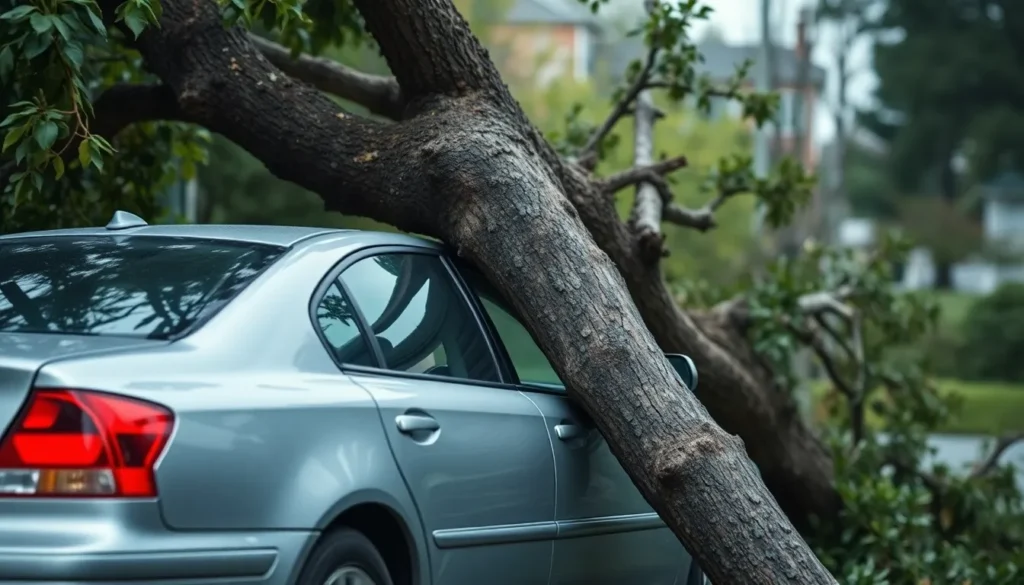
4. Fire and Explosions
Whether your car catches fire due to an electrical short, engine problem, or an external explosion, comprehensive coverage ensures repair or replacement costs are covered.
5. Falling Objects
Ever parked under a tree during a storm? If a branch falls and dents your car, comprehensive coverage pays for the damage. The same goes for damages caused by debris, construction materials, or even falling ice.
6. Animal Damage
Hitting a deer, raccoon, or even having rodents chew through your wiring is covered under comprehensive insurance. This is especially important for drivers in rural areas.
7. Glass and Windshield Damage
Cracked or shattered windshields are a common claim under comprehensive policies. Some insurers even offer “zero-deductible” glass coverage.
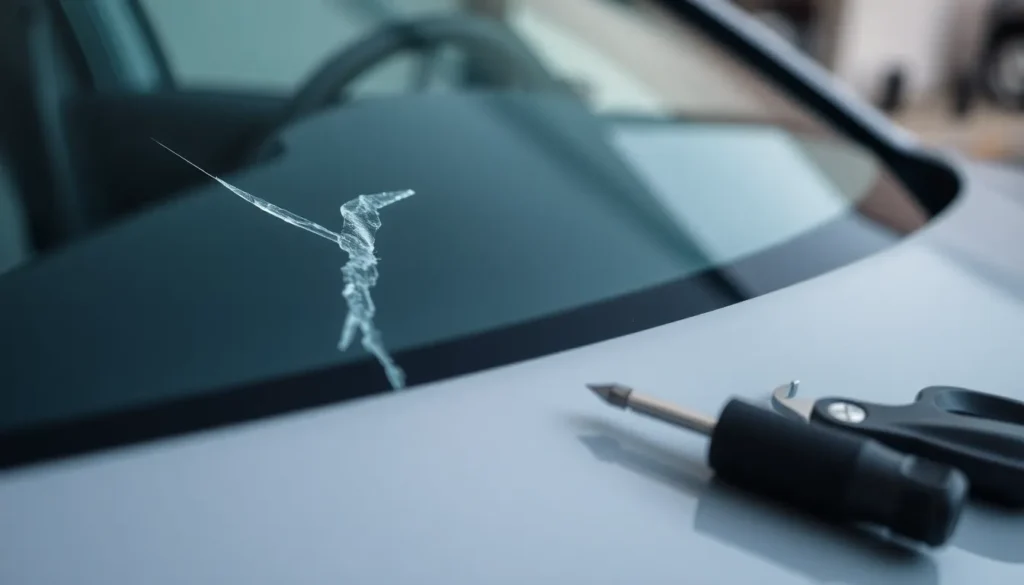
What Comprehensive Auto Insurance Doesn’t Cover
While it offers extensive protection, comprehensive insurance has limits. Here’s what it doesn’t cover:
- Collision damages: If you hit another vehicle or object, that’s covered under collision insurance.
- Wear and tear: Mechanical failures, regular maintenance, and tire replacements are not included.
- Personal belongings: If items inside your car (like laptops or phones) are stolen, they’re usually covered by renters or homeowners insurance, not auto insurance.
Comprehensive vs Collision Insurance
Many drivers confuse the two, but they are quite different:
- Collision Insurance: Covers damages from accidents with other vehicles or stationary objects.
- Comprehensive Insurance: Covers non-collision events like theft, fire, and weather damage.
Most experts recommend carrying both for maximum protection, especially for newer vehicles.
Is Comprehensive Auto Insurance Worth It?
The cost of comprehensive coverage varies depending on your car’s value, your location, and your deductible. According to the Insurance Information Institute (III), the average annual cost of comprehensive coverage in the U.S. is around $174 per year—a relatively low price for the protection it provides.
It’s often worth it if:
- Your car is financed or leased (lenders usually require it).
- You live in an area prone to theft, vandalism, or natural disasters.
- Your vehicle’s value is still significant.
If you drive an older car with low market value, you may not need comprehensive coverage, since the payout could be less than the premium costs.
How to Lower Comprehensive Auto Insurance Costs
Here are practical ways to keep your premiums affordable:
- Increase your deductible – Higher deductibles mean lower premiums.
- Bundle insurance policies – Combine auto and home insurance for discounts.
- Use anti-theft devices – Many insurers lower premiums for cars with alarms or GPS tracking.
- Compare quotes online – Use platforms like The Zebra or Policygenius to find the best rates.
Real-Life Examples
- Case 1: A driver in Texas had their car destroyed by hail. Comprehensive coverage paid $6,000 for repairs, minus a $500 deductible.
- Case 2: A New York driver’s car was stolen. Comprehensive covered the car’s market value, saving the owner thousands of dollars.
These cases highlight why comprehensive coverage can be a financial lifesaver.
Internal & External Links
- Internal Link: Top 10 Ways to Save on Car Insurance During Inflation
- External Link: Insurance Information Institute – Auto Insurance Basics
Conclusion
Comprehensive Auto Insurance is more than just an add-on—it’s a safeguard against unpredictable, costly damages. From theft to natural disasters, it ensures you don’t shoulder the financial burden alone.
If you own a valuable car or live in a high-risk area, adding comprehensive coverage to your policy is a smart move. It’s one of those protections you don’t realize you need until it saves you thousands of dollars.
-
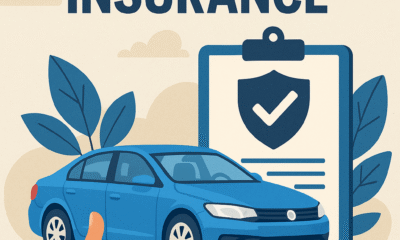
 Insurance2 months ago
Insurance2 months agoBest Auto Insurance for Low-Mileage Drivers: A 2023–2025 Guide
-
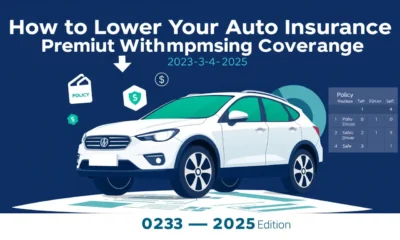
 Insurance2 months ago
Insurance2 months agoHow to Lower Your Auto Insurance Premium Without Compromising Coverage (2023–2025 Edition)
-
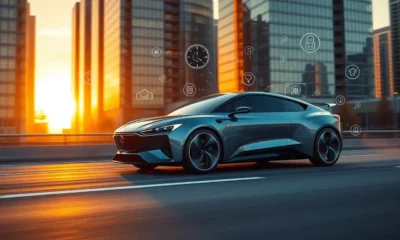
 Car Insurance4 weeks ago
Car Insurance4 weeks agoSmart Cars and Smart Policies: How Auto Insurance is Getting Smarter
-
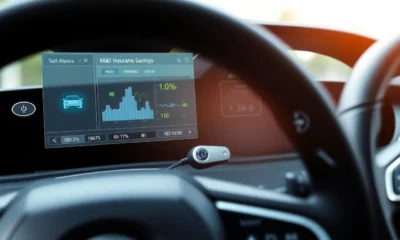
 Insurance4 weeks ago
Insurance4 weeks agoHow Telematics Devices Affect Your Insurance Premium
-
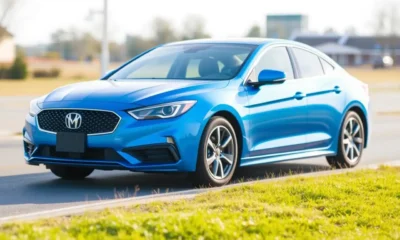
 Insurance2 months ago
Insurance2 months agoTelematics and Pay-Per-Mile Insurance: Are You Paying Too Much?
-
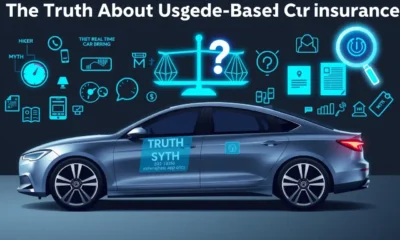
 Insurance2 months ago
Insurance2 months agoThe Truth About Usage-Based Car Insurance
-

 Business3 weeks ago
Business3 weeks agoHow AI Chatbots Are Changing the Way You Buy Car Insurance
-
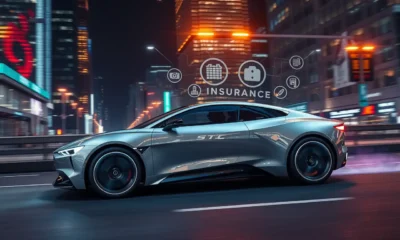
 Business3 weeks ago
Business3 weeks agoSubscription-Based Auto Insurance: Flexible Coverage for 2025

